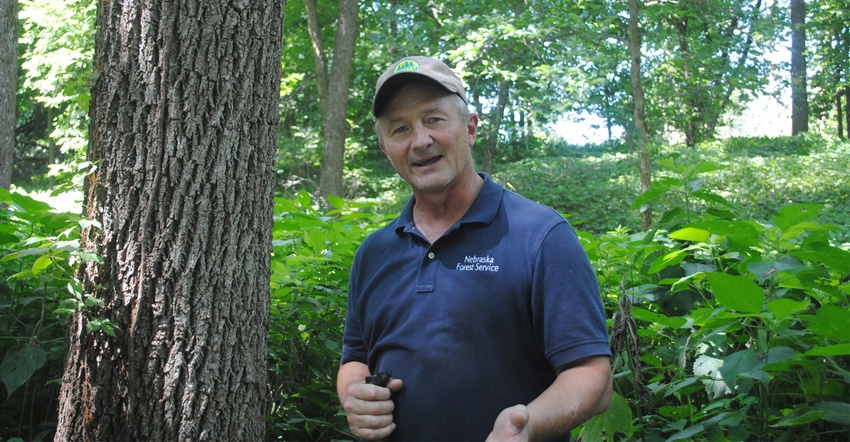October 1, 2018

If you are planting walnut trees, you most likely want to grow them into high-value veneer lumber. That is easier said than done, but certain management strategies can increase your chances.
“What makes a good veneer-quality tree is a straight trunk and minimal defects to the wood,” says Steve Karloff, forester for the Nebraska Forest Service Southeast District. “Typically, walnut trees which are naturally growing in a wooded area are competing with other trees, so they press their growth upward. This tends to create a straighter trunk and often provides for self-pruning of lower branches at an early age.”
This tendency reduces defects created by branch scars along the lower trunk, making natural conditions the best for veneer walnut trees.
“For the most part, naturally grown trees are growing on ideal walnut sites and are not being subjected to adverse soil and site conditions,” Karloff says. This cannot be overlooked, if you are planting walnuts that will be managed for veneer logs.
“Probably the most important advantage you can provide if you are planting walnuts is site placement,” he explains. “Walnuts like deep, rich, well drained alluvial soils. However, they do not like to have their root systems continually wet.”
In many Midwestern and Great Plains states, that typically means planting trees a step or two from a stream or river bottom.
Weeds inhibit growth
“Another important practice is reducing competitive grass and weed growth,” Karloff says. “Heavy weeds and especially bromegrass cover growing around young trees can extremely hinder walnut growth.”
It isn’t that unusual to see 10- to 15-year-old walnut trees growing in heavy brome that are only 5 feet tall and not much larger in diameter than a nickel, he says.
“On the flip side, walnuts benefit from growing with trees that are growing as fast or faster than they do,” Karloff says. “That is why many new walnut plantations are planted with trainer trees. These trees grow quickly and force the walnuts to respond as they do in a natural setting. After the trainer trees have served their purpose, they can be removed to open up the canopy for the walnuts.”
Karloff says that if the walnuts are planted in rows, they should be planted at a spacing of 10 to 15 feet between trees and 12 to 15 feet between rows. “This will seem to be a tight spacing, but you can plan on removing at least one-half to two-thirds of the trees before final harvest,” he says. “This way, there is a larger pool of trees to select from when deciding on the best trees to keep to final harvest.”
Alternate rows can be planted to a different species to create the competition effect to help push walnuts up faster. Some landowners choose to plant in random clusters to mimic a more natural woodland arrangement. Karloff says that it is a personal preference, but planting in rows makes mowing and weed control more convenient.
Proper pruning
“Pruning is important for young developing walnut trees,” he says. “The primary focus for the first few years is to try and establish a central leader. At a young age, we do not want to remove much leaf area, because this reduces the food making abilities of the tree and may stress young seedlings.”
After eight or 10 years, once a central leader has been formed and the tree has established a strong root system, side branches can start to be pruned. “Try not to remove more than 20% of the tree leaf area in any given year,” Karloff says.
“As trees get older, you can start to pick and choose which trees to continue pruning,” he says. “Some trees will never make good timber quality due to their form or defects, so continuing to prune them is a waste of time.”
The clearer trunk you can get, the better, he says. You should prune to at least 9 feet because this is the minimum for a log to be considered for veneer.
If you’d like to learn more about managing for veneer-quality walnut trees, contact Karloff at [email protected].
You May Also Like




